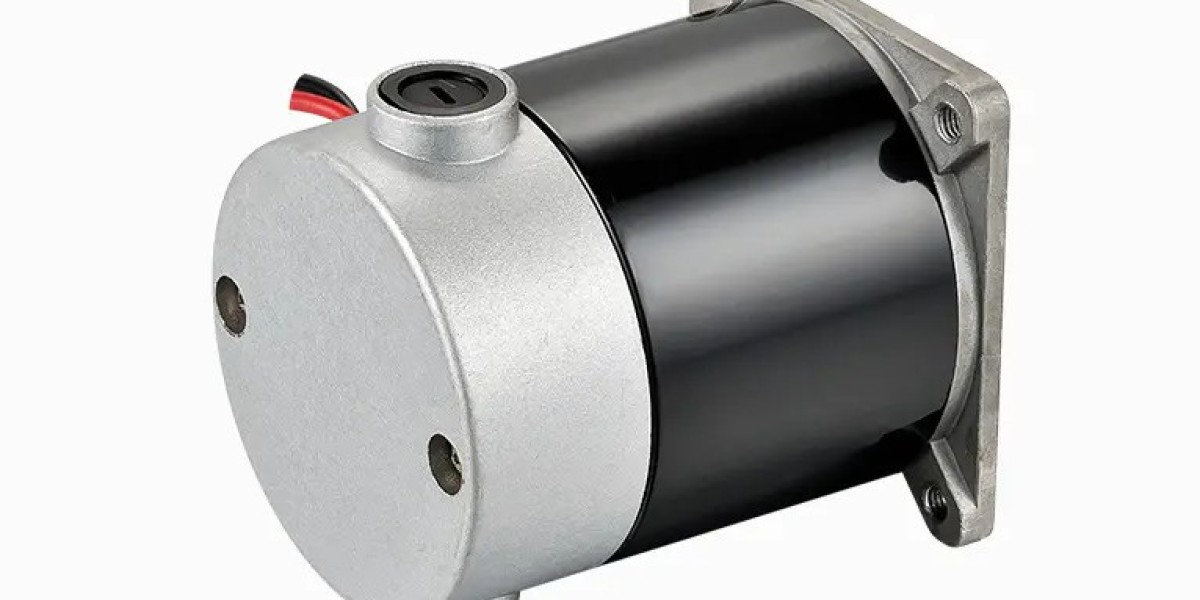When evaluating the performance of any electric motor, one of the most important considerations is energy efficiency. Efficiency determines not only how much power a motor consumes but also how effectively it converts electrical input into useful mechanical output. In this regard, the Permanent Magnet DC Motor, commonly referred to as the PMDC motor, stands out as a highly efficient option, particularly in small to medium-scale applications.
What Drives Efficiency in This Motor Type
This motor relies on a magnetic field generated by permanent magnets, which eliminates the need for energy-consuming field windings. Traditional motors with electromagnetic field coils draw additional current to maintain magnetic fields, resulting in increased power consumption. In contrast, PMDC motors retain a constant magnetic flux from their built-in magnets, which significantly reduces energy losses and improves system efficiency.
Less Power Lost as Heat
One of the key factors that contributes to the energy efficiency of these motors is the reduced loss in the form of heat. Since permanent magnets do not require electrical power to maintain their magnetic field, the total heat generated by the motor is lower than that of conventional wound-field motors. This not only conserves energy but also prolongs the operational life of the motor by reducing thermal wear on components.
Higher Efficiency at Lower Loads
In many real-world applications—such as electric wheelchairs, power tools, and HVAC dampers—motors are not always running at full capacity. PMDC motors are especially efficient under partial load conditions. Their straightforward construction allows for minimal losses due to friction and current leakage, which means they perform well even at lower speeds or when under light mechanical load.
Compact Design, Efficient Output
Efficiency is not only about electrical consumption—it also relates to size and weight. These motors are compact and lightweight while delivering impressive torque, allowing them to provide high mechanical efficiency in tight spaces. This is particularly advantageous in battery-powered equipment, where energy conservation directly translates into longer operational time and reduced recharging frequency.
Comparing With Other Motor Types
Compared to induction motors or brushed universal motors, PMDC motors generally operate with higher efficiency in specific applications. For example, while induction motors may require complex drive electronics and have higher startup power demands, the PMDC variant offers immediate torque output and quicker responsiveness with less energy expenditure.
Limitations Affecting Efficiency
Although efficient, this motor type does have some limitations that may impact overall energy performance in certain contexts. Brush and commutator systems, which are required for operation, introduce mechanical wear and can create minor energy losses through arcing and friction. Additionally, the efficiency may drop if the motor is operated at conditions far from its design point, such as excessive torque loads or voltage fluctuations.
Conclusion
Overall, the Permanent Magnet DC Motor provides excellent energy efficiency, especially in systems where compact size, rapid response, and moderate power are priorities. Its permanent magnet design eliminates the need for external excitation, reduces power loss, and ensures consistent performance under varying loads. While not ideal for every scenario, in the right context, it offers one of the best energy-to-output ratios among DC motor technologies.
Product Performance:
1. Rated Voltage: The motor operates on a 24V DC power supply, making it ideal for applications that require a lower voltage input.
2. Power Output: With a power rating of 500W, this motor delivers a substantial amount of power, ensuring efficient operation in demanding applications.
3. Speed Range: The motor offers a wide speed range, allowing for flexibility in speed adjustment as per the specific application requirements.
4. Torque: The motor provides high torque, enabling it to handle heavy loads and maintain stable performance even in challenging conditions.
5. Noise and Vibration: The motor is designed to operate with minimal noise and vibration, ensuring a smooth and quiet operation.






